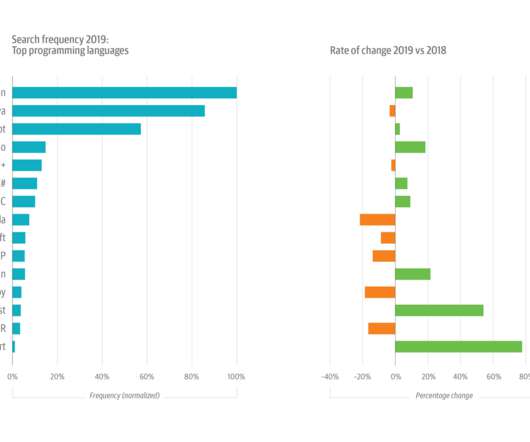5 key areas for tech leaders to watch in 2020
O'Reilly
FEBRUARY 18, 2020
This year’s growth in Python usage was buoyed by its increasing popularity among data scientists and machine learning (ML) and artificial intelligence (AI) engineers. Software architecture, infrastructure, and operations are each changing rapidly. Within the data topic, however, ML+AI has gone from 22% of all usage to 26%.












Let's personalize your content